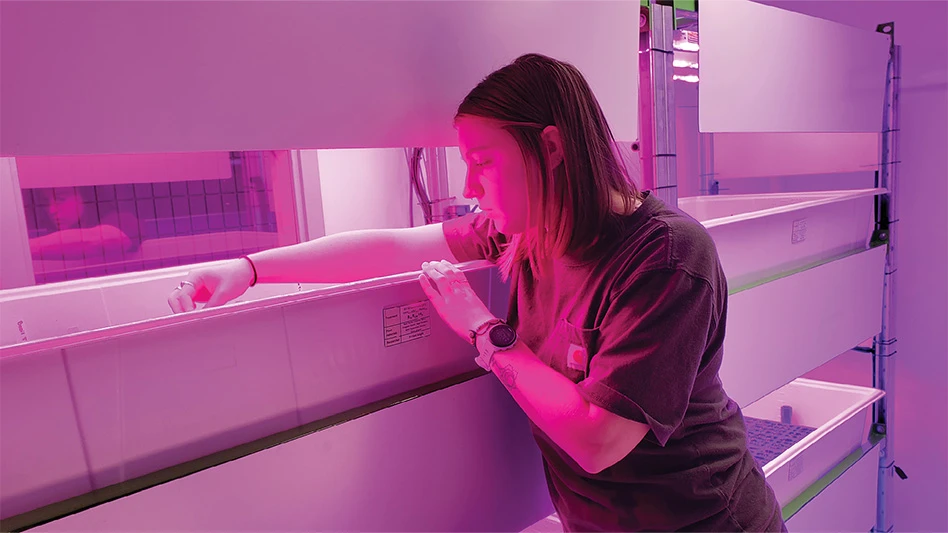|
Maximize space with movable tray systems Gutter-connected greenhouses have the advantages of lower energy costs, better space utilization and more uniform environment. They put all the growing under one roof allowing better materials handling and easier shipping. To get maximum use of space, movable tray systems are often installed. The basic concept is to install trays over the whole greenhouse area except for one movable aisle that is used for tending the plants. The trays are supported on pipe rollers and allowed to move sideways 18 to 24 inches, the width needed for a work aisle. When you need to get to a particular growing tray, the line of trays is pushed aside, leaving the work aisle. Because the trays move, automatic watering, bottom heat and electrical systems have to be supported from the floor or the bench supports. Tray lines as long as 200 feet can be moved by turning the support rollers with a crank at the end.
Moving plants in and out of conventional bench systems is labor intensive. Walking with one flat or a couple of pots at a time adds considerable cost to the plants. Walking 25 feet, picking up a flat and walking back to a cart takes about 23 seconds. At $10/hour this adds more than 4 cents to the cost of that flat. This cost is added every time the flat is moved.
Two types of tray transport systems are common. The roller conveyor system uses flat bottom trays that ride on trolley wheels or fixed casters attached to support rails. The trays are guided by the design of the support wheels attached to the rails. In the second system, the rollers are attached to each tray and ride on the smooth pipe rails. One set of rollers provides the guidance and the other is just for support.
A computer-controlled, motorized system is available but not common in the U.S. In this system, multiple trays are loaded onto a transfer cart. A growing location is designated by the operator and the cart is automatically moved to that location. Trays are off-loaded automatically. The computer keeps a record of the location so that it can find them when they are ready to be shipped. A system such as this can handle up to 150,000 locations in the greenhouse.
Considerable labor is required to handle plants from the time the containers are filled until the time the plants are shipped to the garden center. Although a tray system costs $10 to $20 per square foot, the payback is fairly short due to the significant savings in labor. Have a question? You can write John at jbartok@rcn.com. |

Explore the January 2012 Issue
Check out more from this issue and find your next story to read.
Latest from Greenhouse Management
- USDA fires experts on invasive pests, including Asian citrus psyllid, chilli thrips
- CEA Alliance celebrates bipartisan introduction of Supporting Innovation in Agriculture Act
- Dümmen Orange North America celebrating 25th anniversary in 2025
- CEA HERB Part 1: Best management practices for culinary herbs
- Lawsuit challenges new H-2 visa rules
- CEA HERB Part 2: A guide to increasing the sowing density of culinary herbs
- Illinois Landscape Contractors Association changes name to Landscape Illinois
- 2025 Proven Winners Horticulture Scholarship applications now open
.jpg)










